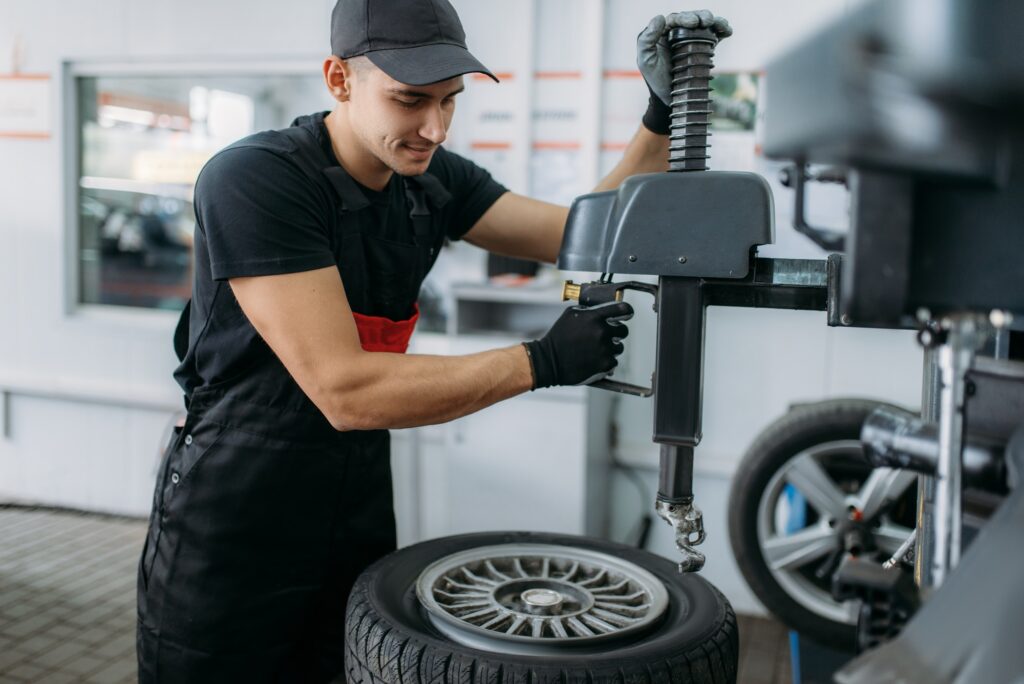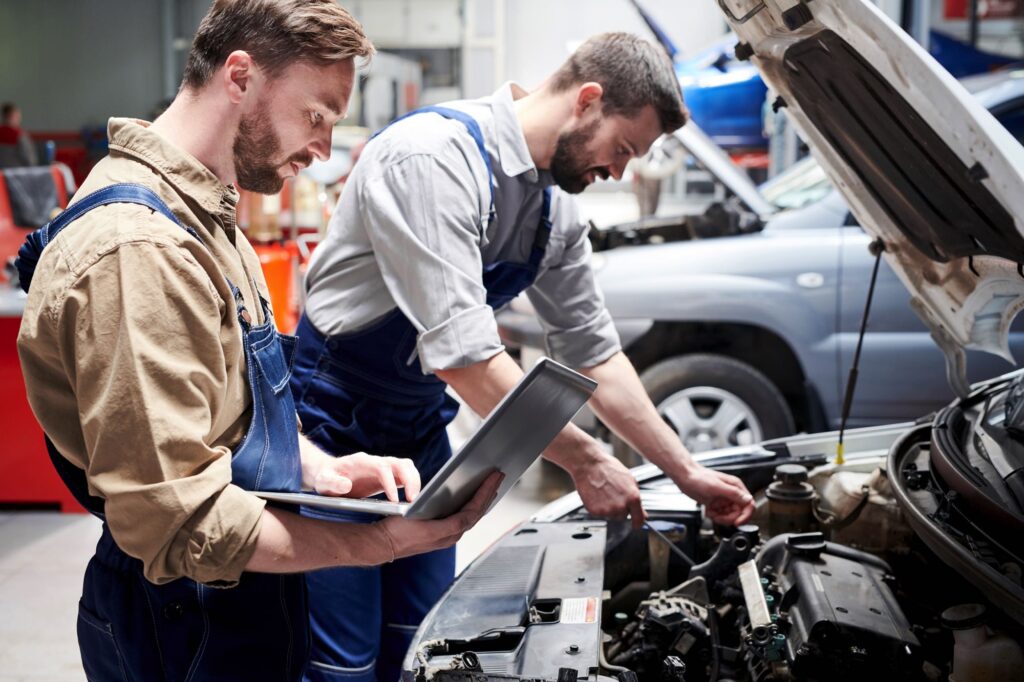Tyres are the main and single point that directly contact with the road therefore tyres should perfect. For this purpose, regular inspection of tyres is necessary. One should follow some basic top 5 tire maintenance tips to keep the tyres perfect that also enhance the lifespan of tyres.
Tires are often the unsung heroes of your vehicle, quietly bearing the brunt of every journey. In a challenging environment like the UAE, where scorching temperatures and varied road conditions put immense stress on them, proper tire maintenance isn’t just about saving money – it’s crucial for safety and optimal vehicle performance. Neglecting your tires can lead to premature wear, reduced fuel efficiency, and a heightened risk of blowouts, especially during the sweltering summer months. By adopting a few simple yet effective habits, you can significantly extend the life of your online tyres UAE and ensure safer, more efficient driving in the UAE.
Here are the top 5 tire maintenance tips to help you get the most out of your tires:
1. Maintain Correct Tire Pressure – Your First Line of Defense
Perhaps the single most important tire maintenance tip, especially in the UAE’s climate, is maintaining correct tire pressure. Tire pressure directly impacts how your tires perform and wear.
Why it’s Crucial in the UAE:
Heat Expansion:
Air inside tires expands significantly with heat. Underinflated tires generate excessive heat due to increased friction, which can lead to tire degradation and a higher risk of blowouts – a very real danger on hot UAE roads. Overinflation, while less common, can also be problematic, leading to reduced contact patch and harsher rides.
Fuel Efficiency:
Correctly inflated tires minimize rolling resistance, directly impacting your car’s fuel economy. With fluctuating fuel prices, this can lead to tangible savings.
Safety and Handling:
Proper inflation ensures optimal tire contact with the road, providing maximum grip for braking, acceleration, and steering. This is vital for navigating the diverse road networks in the UAE, from busy city streets to high-speed highways.
Tire Lifespan:
Both under- and over-inflation lead to uneven wear patterns. Underinflation causes excessive wear on the outer edges, while overinflation causes wear down the center. Correct pressure ensures even wear across the tread, maximizing the tire’s lifespan.
How to Do It:
Check Regularly:
Check your tire pressure from tyre shop near me at least once a month, and always before a long journey. The best time to check is when the tires are “cold” – meaning the vehicle hasn’t been driven for at least three hours or more than a couple of kilometers.
Find the Right Pressure:
Your car’s recommended tire pressure (in PSI – pounds per square inch or kPa – kilopascals) is typically found on a placard located on the driver’s side door jamb, inside the glove compartment, or on the fuel filler flap. Never rely on the maximum pressure listed on the tire’s sidewall.
Don’t Forget the Spare:
If your car has a full-size spare tire, ensure it’s also correctly inflated.
2. Practice Regular Tire Rotations – Even Wear, Longer Life
Tires in Abu Dhabi on different axles and sides of your vehicle wear at different rates due to varying weight distribution, braking forces, and steering demands. Regular tire rotation helps distribute this wear evenly across all four tires.
Why it’s Crucial in the UAE:
Maximizing Investment:
Given the cost of quality tires suitable for the UAE’s conditions, maximizing their lifespan through even wear is economically smart.
Consistent Performance:
Even wear ensures consistent grip and handling characteristics across all online tyres UAE, maintaining the vehicle’s balance and safety.
Preventing Premature Replacement:
Unevenly worn tires will need replacement sooner, even if some parts of the tire still have good tread.
How to Do It:
Follow Manufacturer Guidelines:
Consult your car’s owner’s manual for the recommended rotation pattern and interval (usually every 8,000 to 10,000 kilometers).
Professional Service:
It’s best to have tire rotations performed by a professional mechanic or tire shop near me . They have the right equipment to safely lift your vehicle and can also inspect your tires for other issues during the process.
3. Ensure Proper Wheel Alignment and Balancing – Smooth Ride, Safe Drive
Wheel alignment and tire balancing are distinct but equally important aspects of tire maintenance that often go hand-in-hand.
Wheel Alignment:
Refers to the angle and direction at which your wheels are set. Improper alignment can cause rapid and uneven tire wear, pulling to one side, and compromised steering.
Why it’s Crucial in the UAE:
Potholes, curbs, and even general wear and tear from aggressive driving can throw off alignment. Proper alignment prevents excessive scrubbing of tires, which can be exacerbated by the hot road surfaces.
How to Do It:
Have your alignment checked whenever you get new tires, after hitting a major pothole or curb, or if you notice your vehicle pulling to one side or uneven tire wear.
Tire Balancing:
Ensures the weight of the tire and wheel assembly is evenly distributed. An unbalanced wheel will vibrate, causing uneven tire wear, discomfort, and stress on suspension components.
Why it’s Crucial in the UAE:
High-speed driving on UAE highways makes even minor imbalances noticeable and potentially dangerous.
How to Do It:
Tires in Abu Dhabi should be balanced every time they are mounted on a wheel, and re-balanced if you notice vibrations or after a significant impact.
4. Regular Visual Inspection – Spot Issues Before They Grow
Be proactive and regularly inspect your tires for any signs of damage or abnormal wear. A quick visual check can prevent small issues from escalating into major problems.
Why it’s Crucial in the UAE:
The UAE environment can present various hazards, from loose gravel to construction debris. Early detection of issues can save you from a roadside emergency.
What to Look For:
Tread Depth:
Use a tread depth gauge or the built-in tread wear indicators (small bars in the tread grooves). If the tread is flush with these indicators, your tires are worn out and need replacement. The legal minimum tread depth in the UAE is 1.6mm.
Cracks or Bulges:
Look for any cracks on the sidewall, especially near the rim, or bulges which indicate internal damage and a high risk of blowout. These are particularly dangerous in hot weather.
Punctures or Embedded Objects:
Check for nails, screws, or other foreign objects lodged in the tread.
Uneven Wear Patterns:
This could signal issues with inflation, alignment, or balancing.
How to Do It:
Make it a habit to quickly walk around your car and visually inspect each tire regularly, perhaps when you refuel or wash your car.
5. Consider the Tire’s Age (DOT Code) – Beyond Tread Depth
Even with perfect maintenance, tires have a lifespan. Rubber compounds degrade over time due to exposure to UV light, oxygen, and heat, regardless of how much tread is left.
Why it’s Crucial in the UAE:
The intense heat in the UAE accelerates the aging process of rubber.
How to Do It:
Check the DOT Code:
On the tire’s sidewall, you’ll find a four-digit DOT code (e.g., “1524” means the 15th week of 2024).
Replacement Guideline:
While there’s no universally fixed rule, many manufacturers and safety experts recommend replacing tires that are 6-10 years old, even if they appear to have sufficient tread, especially in harsh climates like the UAE. These top 5 tire maintenance tips for 5 years, regular professional inspection is highly recommended.
By diligently following these top 5 tire maintenance tips, drivers in the UAE can not only extend the life of their tires but also significantly enhance their vehicle’s safety, performance, and fuel efficiency on the country’s diverse and demanding



